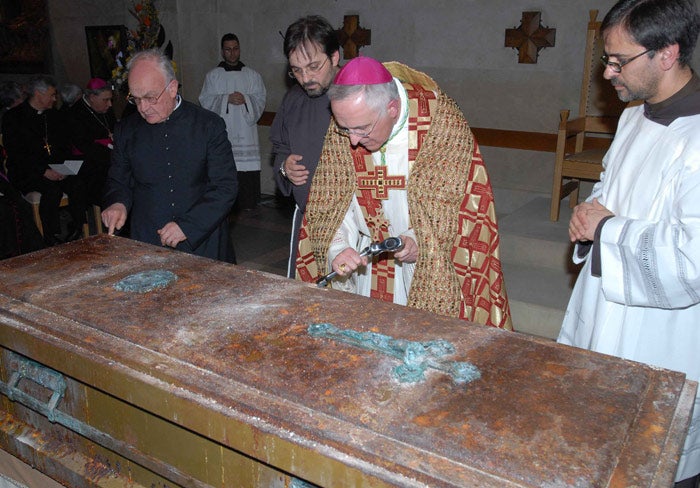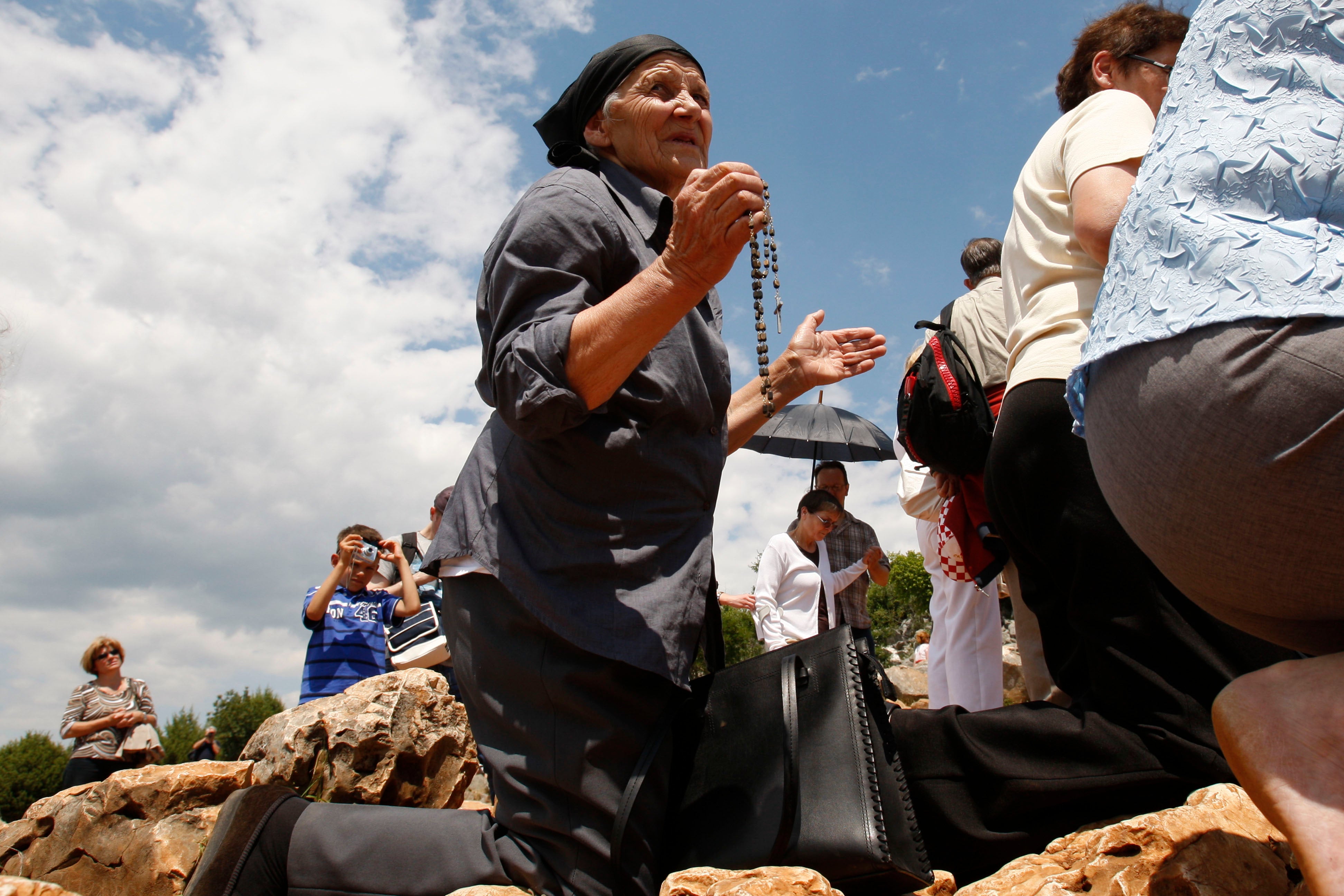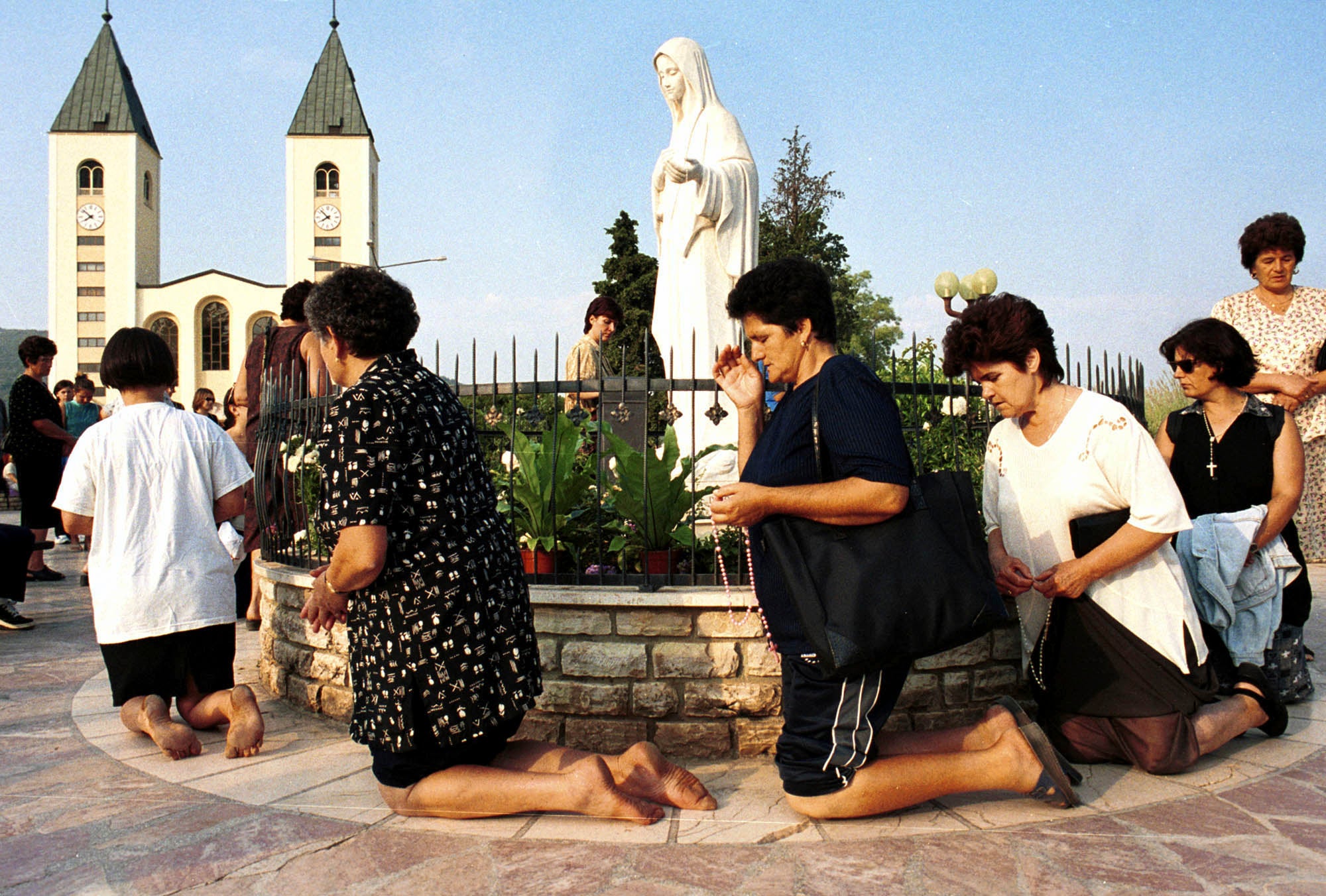Vatican changes rules on how it judges supernatural events like stigmata
Apocalyptic prophesies are spreading online faster than ever before, causing confusion among the faithful
The Catholic Church has a long and controversial history of the faithful claiming to have had visions of the Virgin Mary, of statues that purportedly wept blood tears and stigmata that erupted on hands mimicking the wounds of Christ.
On Friday, the Vatican announce new norms to help determine whether and when these seemingly supernatural events are authentic. It’s stepping in amid a boom in claims and concern that apocalyptic prophesies are spreading online faster than ever before, causing confusion among the faithful.
When confirmed as authentic by church authorities, these otherwise inexplicable divine signs can lead to a flourishing of the faith, with new religious vocations and conversions. That has been the case for the purported apparitions of Mary that turned Fatima, Portugal and Lourdes, France into enormously popular pilgrimage destinations.

Church figures who claimed to have experienced the stigmata wounds, including Padre Pio and Pope Francis’ namesake, St. Francis of Assisi, have inspired millions of Catholics. A plaster statue of the Madonna that purportedly wept blood in the garden of a family in the Italian city of Civitavecchia counted St. John Paul II as a devotee, even though the event was never officially confirmed as authentic.
But the phenomena can also become a source of scandal. That was the case when the Vatican in 2007 excommunicated the members of a Quebec-based group, the Army of Mary, after its foundress claimed to have had Marian visions and declared herself the reincarnation of the mother of Christ.

Francis himself has weighed in on the phenomenon, making clear that he is devoted to the main church-approved Marian apparitions, such as Our Lady of Guadalupe, who believers say appeared to an Indigenous man in Mexico in 1531, and Our Lady of Fatima, who believers say appeared to three illiterate shepherd children in 1917.
But Francis has expressed skepticism about more recent events, including claims of repeated messages from Mary to “seers” at the shrine of Medjugorje, in Bosnia-Herzegovina, even while allowing pilgrimages to take place there.
“I prefer the Madonna as mother, our mother, and not a woman who’s the head of a telegraphic office, who sends a message every day at a certain time,” Francis told reporters in 2017.
On Friday, the Vatican’s doctrinal office will issue a revised set of norms for discerning apparitions “and other supernatural phenomena,” updating a set of guidelines first issued in 1978.

Those guidelines largely left it in the hands of the local bishop to investigate purported visions or supernatural events to determine if they were worthy of belief among the faithful, and tended to err on the side of caution.
“I say we have to believe in these apparitions that they’re possible, but we also have to have a type of healthy skepticism,” said Robert Fastiggi, who teaches Marian theology at the Sacred Heart Major Seminary in Detroit, Michigan and is an expert on apparitions.
He noted that the 1978 norms identified plenty of reasons for proceeding carefully, such as whether the purported message received during the apparition contradicted the faith or whether the person claiming it had an economic interest in drawing believers in.
The general rule of thumb, Fastiggi said in an interview, is to follow the biblical advice: “Test everything, retain what is good.”

The Vatican has generally refrained from intervening, leaving it in the hands of local bishops and offering its approval to fewer than 20 reported apparitions over several centuries, according to Michael O’Neill, who runs the online apparition resource The Miracle Hunter.
Last year however, it announced the creation of a special commission, or observatory, within the Pontifical International Marian Academy to study the phenomenon and provide consulting services to bishops.
The commission is made up of a scientific committee of experts, including Fastiggi, from a variety of disciplines. Its director, Sister Daniela Del Gaudio, will join the Vatican’s doctrine czar in announcing the new norms at a news conference Friday.
The observatory’s mission statement says experts will analyze and interpret apparitions, lacrimations, or weeping statues, stigmata “and other mystical phenomena that are in progress or have already occurred, but are still awaiting a pronouncement of the ecclesiastical authority on their authenticity.”
“It is important to provide clarity, because often alleged messages generate confusion, spread anxious apocalyptic scenarios or even accusations against the pope and the church,” said the academy head, the Rev. Stefano Cecchin.
There has been no shortage of controversy surrounding reported apparitions or other supernatural phenomena.

In 1951, for example, Pope Pius XII confirmed a decision by the then-Holy Office that purported visions of the Madonna at a Carmelite convent in Lipa, Philippines, which were said to have been accompanied by a shower of rose petals, had “no sign of supernatural character or origin.”
The Vatican came to that decision after the convent prioress confessed to having participated in the “deception” at Lipa, and some of her nuns testified that they had seen deliveries of roses to the convent and had received orders from the prioress to burn the petal-less stems.
But for decades, Filipino bishops glossed over the definitive nature of the Vatican ruling, suggesting in their communications to the faithful that the jury was still out on whether the apparitions were authentic or not, according to documentation made public last year by the Filipino bishops conference.
As a result, some Filipino faithful have continued to venerate the image of the Madonna at Lipa, prompting the Vatican in a series of increasingly exasperated decrees to demand that the Lipa archbishop heed the original 1951 ruling and put an end to the devotional events.
The latest decree, from July of last year, demanded the Lipa archbishop cancel plans to commemorate the 75th anniversary of the purported apparitions, saying “it would not be advisable for you to authorize the aforementioned celebration under any form.”
Subscribe to Independent Premium to bookmark this article
Want to bookmark your favourite articles and stories to read or reference later? Start your Independent Premium subscription today.

